Dee Estuary Birding
Monthly Newsletter...
August 2020 Newsletter
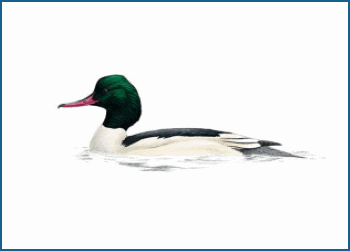
Goosanders on the Dee Estuary
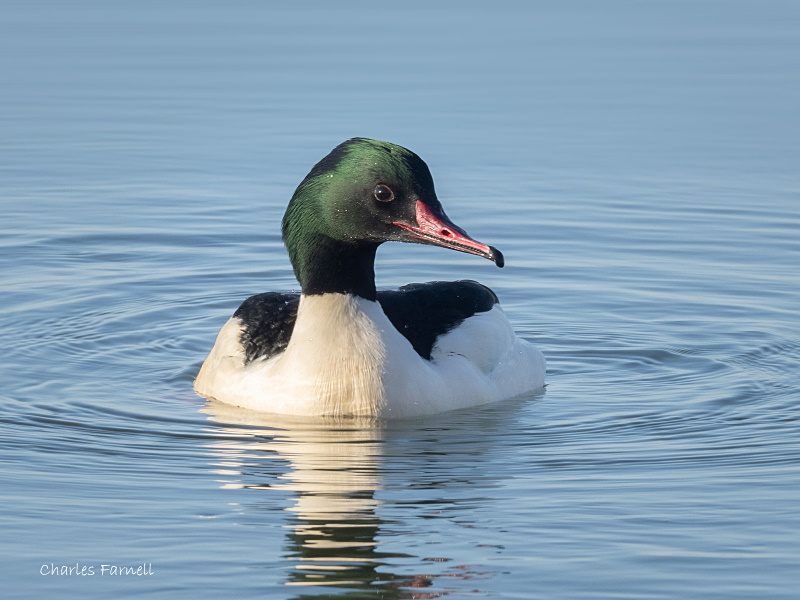
Whatever you have learnt about ducks probably isnít true about the Goosander. This is a very different animal from your quacking park staples, and almost everything they do, it doesnít do. If you take a list of unusual duck facts, many of them will be true of Goosanders. The Goosander is a duck apart, a thoroughbred and a maverick. Far from being a portly, bread-ivorous consumer of benefit handouts, the Goosander is a big-game fishing duck. Dominic Couzens (Ref 1).
Being a bird mainly of rivers and lakes the Goosander is a scarce bird
on the estuary, although it is definitely getting commoner than it used
to be. Over the last four winters Goosanders have become regular on
West Kirby Marine Lake. One bird was recorded several times in the
winter of 2013/14 but before that I can only find two records of brief
visits by single birds, in 2001 and 2010. But in the winter of 2016/17
two or three spent several weeks and on 7th December 2019 the
first double-figure
record was achieved with 10, they reached 11 later that month. I
assume what's driving this is just the general increase in the country
as a whole and in particular the increase locally both in Clwyd and
Cheshire. Interestingly, Goosander numbers at West Kirby have increased
whilst Red-breasted Mergansers have shown a sharp decrease over the
past few winters - see graph below. As the decrease seemed to have
started well before Goosanders discovered the lake it seems unlikely
one has caused the other although it's certainly a possibility due,
perhaps, to competition for fish.
Red-breasted Mergansers numbers on the Dee estuary as a whole have
dropped somewhat from what they were 15 to 20 years ago but there
doesn't appear to have been any significant drop overall in the past
five years.
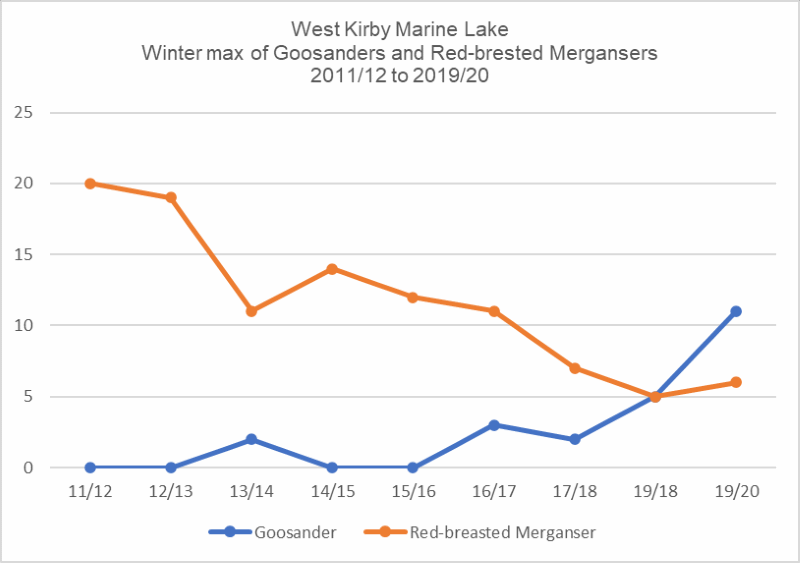
Until they recently started using West Kirby Marine
Lake Goosanders were known mainly as a passage bird with flocks passing
through in late summer and autumn. The bar chart below shows the annual
distribution over a period of 50 years, each bar is the total number
over that period so you can see what I meant when I said it is a scarce
bird! The large majority of records are of flocks of four or more with
many reported in August and September flying west along north Wirral
before heading into the estuary.
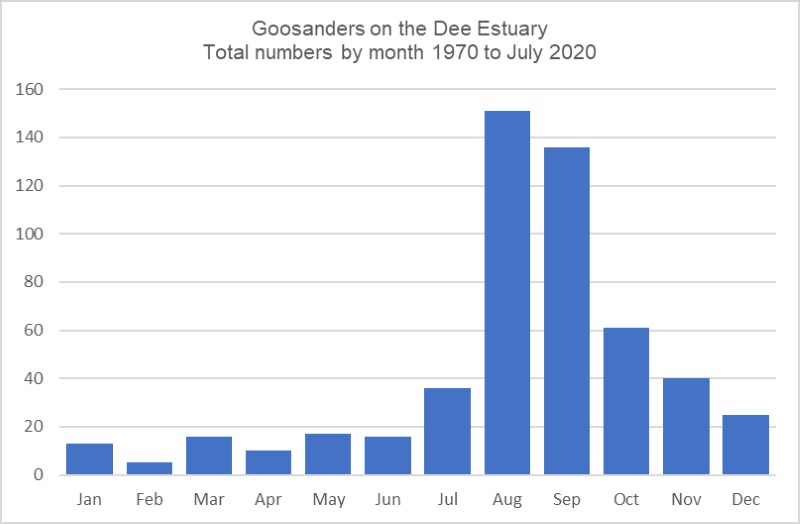
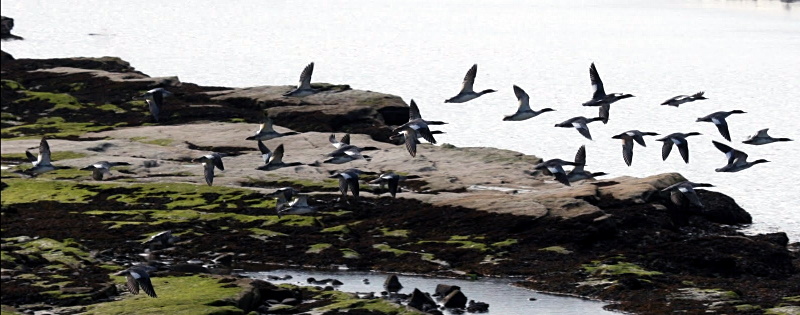
Most just seem to keep going, presumably heading
inland, but occasionally some touch down such as the 31 seen on the
rocks at Middle Eye in August 2010. At this time of year sizable flocks
have also
been recorded on the sea off north Wirral, at Point of Ayr, Parkgate,
Connah's Quay and Burton Mere Wetlands. At other times of year ones and
twos can turn up anywhere although the five non-breeding birds at
Thurstaston in mid-June this year (2020) were certainly unexpected and
a first for that site.
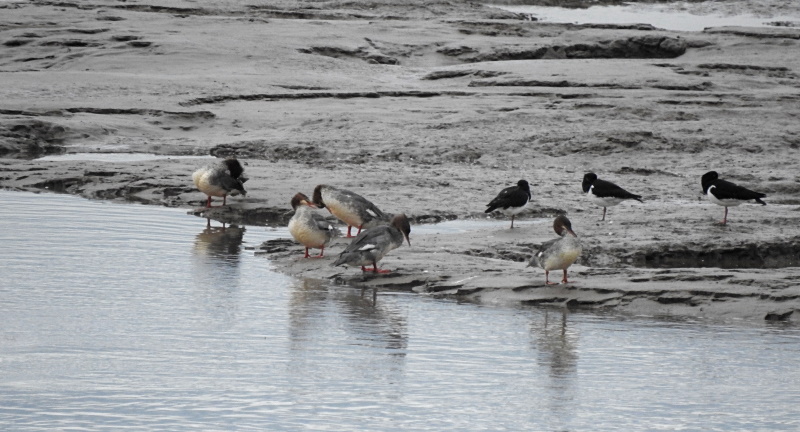
One thing you will notice about any Goosander seen
from June to October is that they will all be 'redheads' (females and
young birds). All the adult males from north-west Europe,
including the UK, perform an astonishing moult migration all the way to
northern
Norway, this was only discovered in the 1980s. You may think the males
are selfish leaving the females to look after the recently hatched
young birds but it does mean they are not competing for food at the
breeding areas while they themselves are in an area where food supply
is
more reliable.
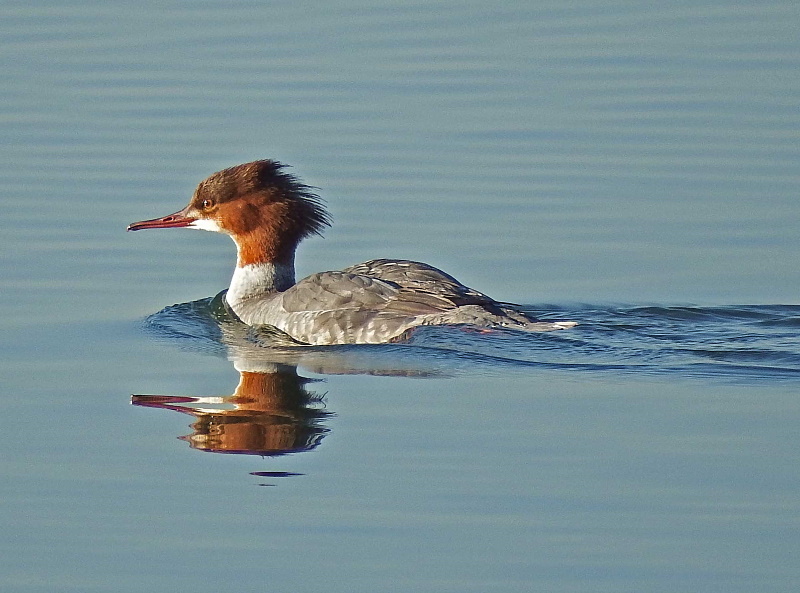
History and Status
Goosanders seem to have been present in very small
numbers as a wintering bird on the Dee estuary in the 19th century and
Eric Hardy mentions one in Liverpool Museum which had come from Hoylake
in 1894. They remained rare well into the 20th century and the first
record in double figures I can find is of 15 off Hilbre in November
1978, although such flocks have become more regular recently
it is still unusual to see that many together on the estuary.
Goosanders were unknown as a breeding bird in the UK
until they colonised Scotland in the late 19th century, not reaching
England until 1941. It took them until 1995 to start breeding in
Cheshire although they were certainly breeding in Clwyd by 1990.
Perhaps
due to lack of suitable nesting habitat they remain a scarce breeder
in Cheshire but are more numerous in North Wales where the Clwyd
estuary seem particularly attractive to them and Rhuddlan in particular
is regularly mentioned in the bird reports as a place to see several
broods in the spring and summer.
Numbers inland are much higher in the winter, a survey in 2010-11 found 166 in Cheshire and similar numbers are found in Clwyd on various lakes and reservoirs as well as both the River Clwyd and River Dee. The birds seen flying through the Dee estuary in late summer and autumn are likely to include some of these birds which over-winter.
Nationally it is estimated that there are 3,500
pairs breeding and 15,000 over-wintering. The British breeding
population is largely sedentary (i.e. within the UK, except for the
male moult migration) and the wintering numbers are boosted by migrants
from continental Europe, although, except in hard winters, numbers
coming here for the winter is probably quite low and are mainly found
in south-east England.
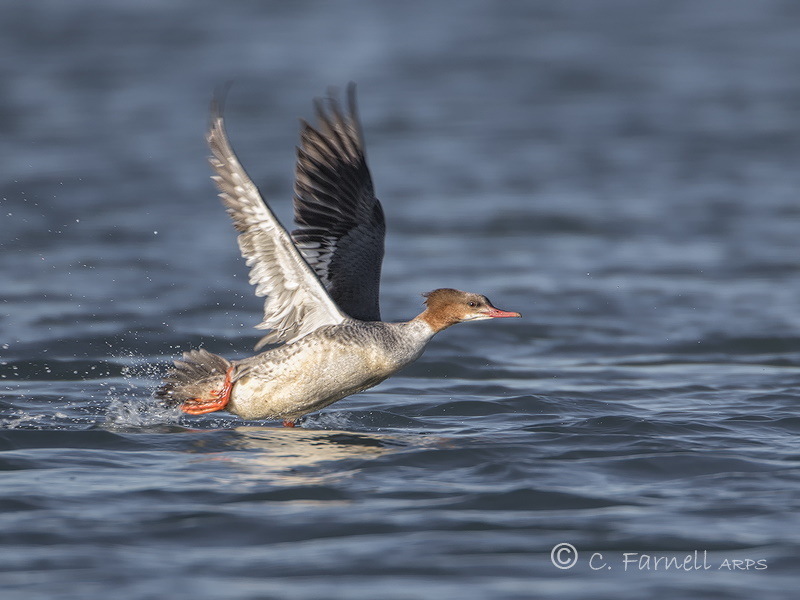
References:
1. Dominic Couzens, Goosander, Bird Watching
magazine, October 23 2017.
2. Goosander records from http://www.deeestuary.co.uk/, 2000 to 2020 (many
thanks to all who sent in their sightings).
3. Cheshire and Cheshire & Wirral Bird Reports
1965 to 2017.
4. Clwyd Bird Reports and North-east Wales Bird Reports various from 1980 to 2018.
5. B. Little and R.W. Furness, Long-distance moult migration by British Goosanders, Ringing and Migration 6: October 1985.
6. Eric Hardy, The Birds of the Liverpool Area, 1941.
7. Steve Barber, The CAWOS Goosander Survey 2009-2011, C&W Bird Report 2010, CAWOS.
8. Population estimates of wintering waterbirds, British Birds, March 2019 (Vol 112).
9. Richard Hearn, Status of Goosanders in the UK,
JNCC, February 2015.
10. Hedley Bell, The Birds of Cheshire, 1962.
11. Hilbre Bird Observatory Blog, http://hilbrebirdobs.blogspot.com/.
12. WeBS Report Online, BTO,
https://app.bto.org/webs-reporting/ .
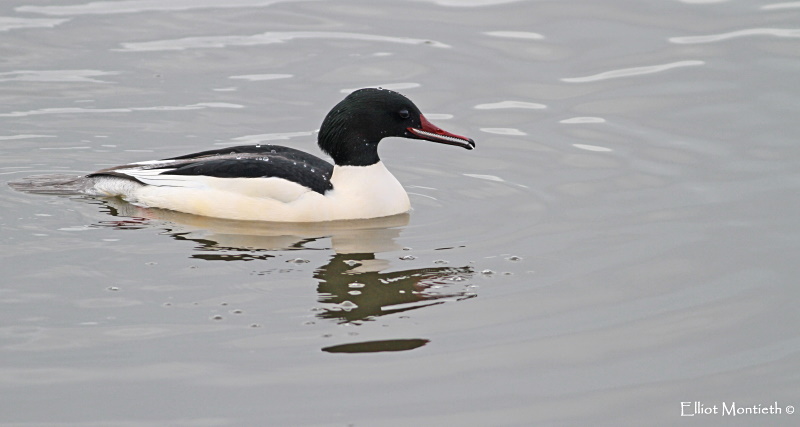
Colour Ring Report
It's been good to be able to get out and about again
looking for colour-ringed birds. We've seen several although we've had
some bad luck with birds just being too distant and in other cases we
are still waiting for feedback. But below are two particularly
interesting records.
Little Tern
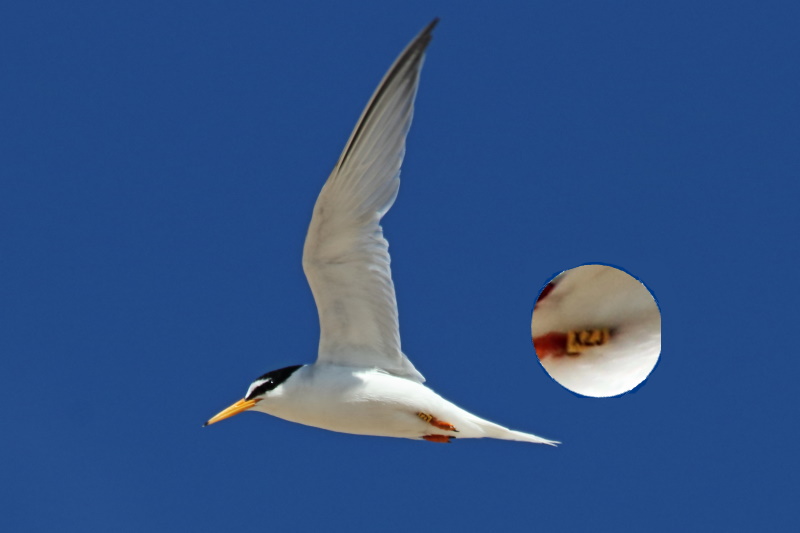
XZJ - black on yellow ring.
Ringed on 28/6/2008 with metal ring, as a chick, at Kilcole, County
Wicklow, Ireland.
Ringed on 12/6/2018 with colour ring at Gronant, Clwyd.
Recorded:
28/11/2019 at Banc d'Arguin, Mauritania.
12/7/2020 at Gronant, Clwyd.
This bird shows a typical movement between Irish Sea colonies having
been ringed as a chick in Kilcole in 2008 then moving to Gronant to
breed - it's sighting this July confirms it is now 12 years old. Last
November it was spotted by a team from NIOZ (Royal Netherlands
Institute for Sea Research) in Mauritania who were there monitoring
waders, we know all about NIOZ as they ring hundreds of Knot many of
which we see here on the Dee Estuary. Remarkably this is only the
second record of a British ringed Little Tern from Mauritania.
Black-tailed Godwit
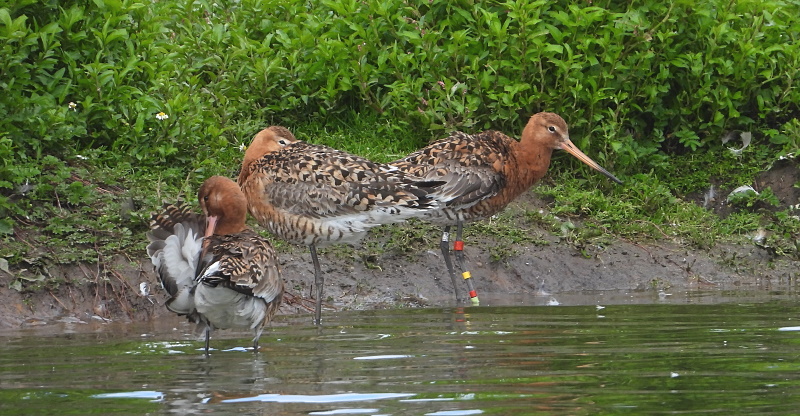
m-R//YRL.
Ringed on 23/12/2019 at Sanxenco, Pontevedra in north-west Spain (just
north of Vigo).
Present at Caldy from 5/7/2020 to the end of July 2020.
It was ringed by the Andurina Ringing Group as part of the shorebirds
monitoring program in Galicia. This is the first Black-tailed Godwit we
have seen which has been ringed by this group. They also ring many
other species of waders and always use the same pattern with one ring
on the right tibia and three on the right tarsus - we have seen three
Dunlin from this scheme, one on Hilbre and two at Hoylake.
July Bird News
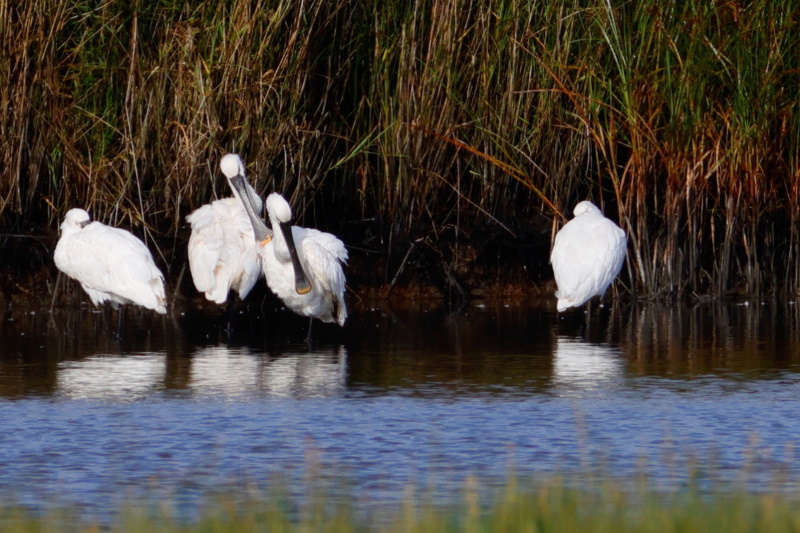
Up to four spoonbills were present all month,
usually either at Parkgate or Burton Mere Wetlands. At least three
Marsh Harriers, one Hen harrier and three Great Egrets were
regularly recorded, and loads of Little Egrets.
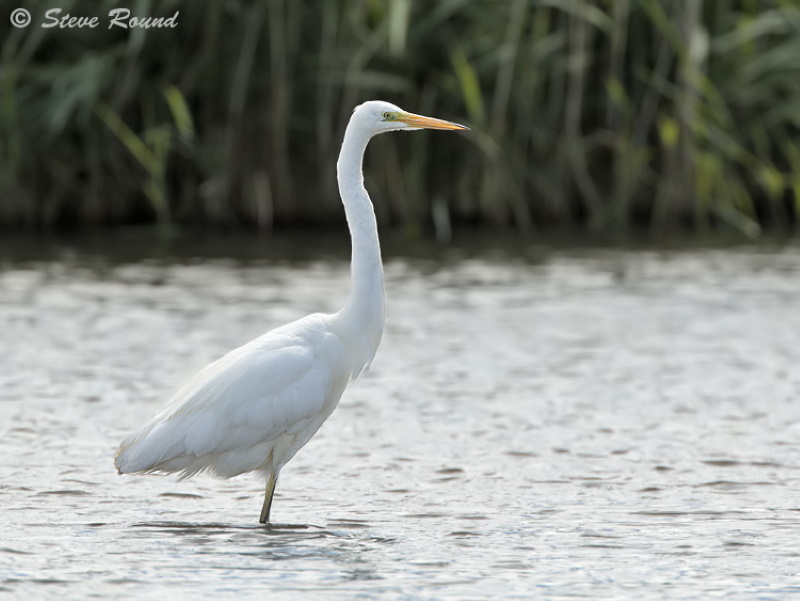
Returning Mediterranean Gulls are always a feature
in July and there were five at Heswall, two at West Kirby, two at
Hoylake and two at Meols/Leasowe. Out towards Hilbre there were plenty
of Sandwich Terns with max count of 580 a third of which were
juveniles. Towards the end of the month 520 Little Terns at Gronant and
1,000 Common Terns at Point of Ayr were counted. I've not yet heard how
our Little
Tern and Common Tern colonies have done this year but I fear not
particularly well what with gales, very strong sun and torrential rain
at different times all causing problems. Further out to sea there were
reports of a few Manx Shearwaters during strong westerlies and three
Arctic Skua off both Hilbre and Meols at the end of the month. More
unexpectedly was an
Arctic Skua seen chasing Carrion Crows over Thurstaston Shore on the
26th. 618 Gannets off Hilbre on the 28th was a great count during a
strong westerly.
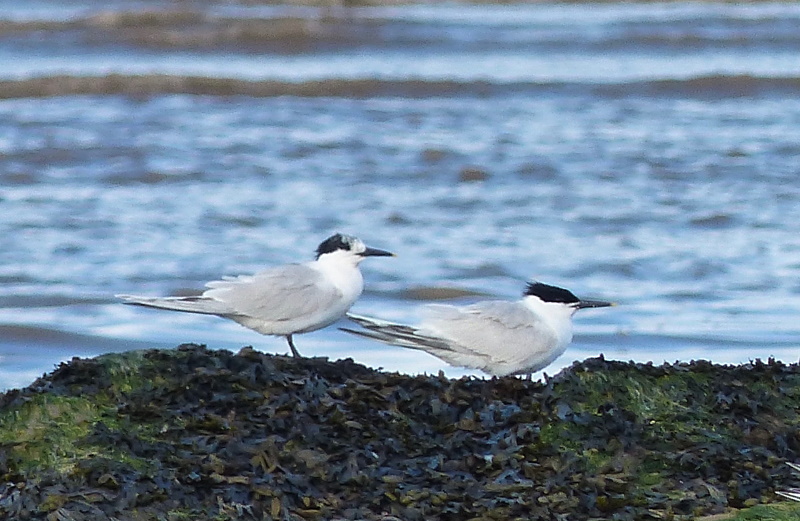 Sandwich Terns by Middle Eye,
July 19th © Allan Hitchmough
Sandwich Terns by Middle Eye,
July 19th © Allan Hitchmough
Waders were pouring in to the estuary but we
already had a large number of immature Knot over-summering as reported
in last month's newsletter. On the 8th a large flock of 10,000 which
had been feeding on Dawpool Bank flew over me heading north towards
Formby and I then saw another large flock by Little Eye - so an
estimated total of 15,000. Amazing numbers for July, by the end of the
month a few returning adults in full breeding plumage were recorded.
Black-tailed Godwits returning from Iceland had increased to 2,900 by
the end of July. They could be seen feeding right out in the middle of
the estuary off Caldy and roosted in Caldy Wildfowl Collection over
high tide. Redshank numbers had increased to nearly four thousand by
the month end at Thurstaston where there were also up to 20 Whimbrel.
Greenshanks were recorded at several sites with the highest count at
Parkgate with 22. Wood, Green and Common Sandpipers were all recorded.
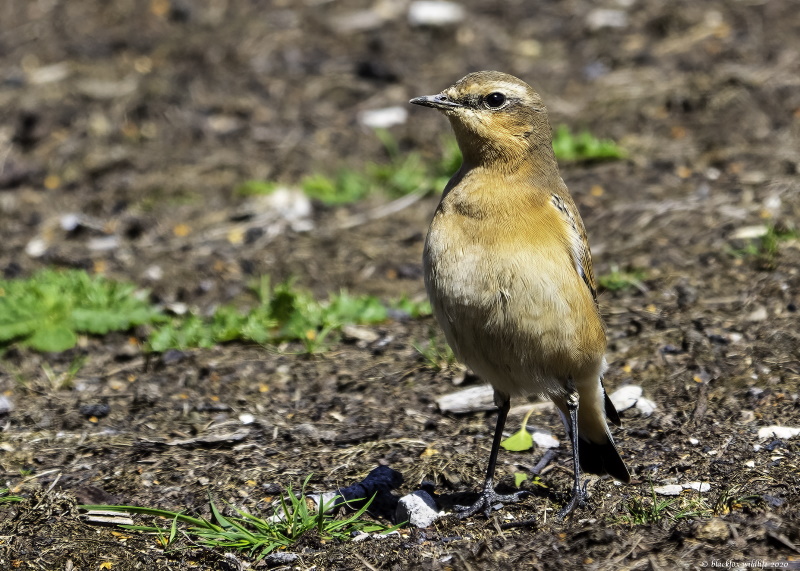
Several juvenile Wheatears were reported so they
seem to have had a good breeding season. Also several siskins and
Crossbills were observed, mostly flying overhead, probably dispersing
away from the large influx into the country reported in June.
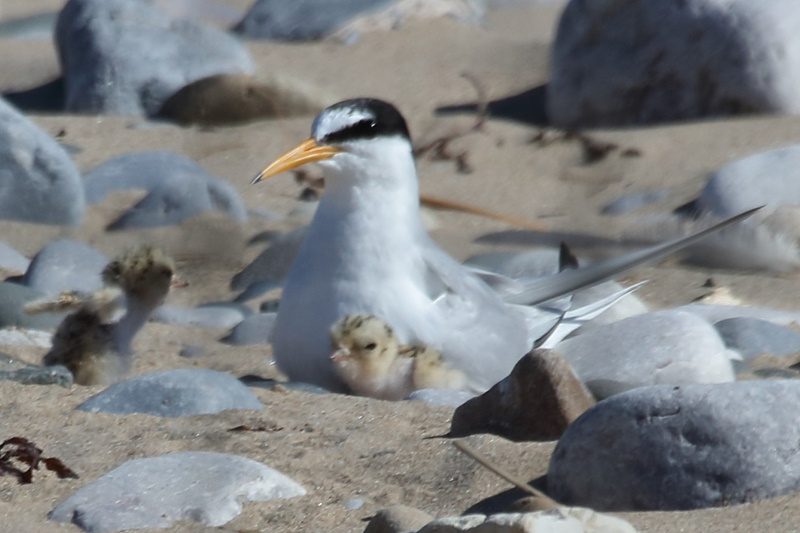
In Wirral what we call rivers most people would
call ditches! But, nevertheless we get our share of Kingfishers and
several were reported in July no doubt dispersing after the breeding
season including this one below on the River Birket.
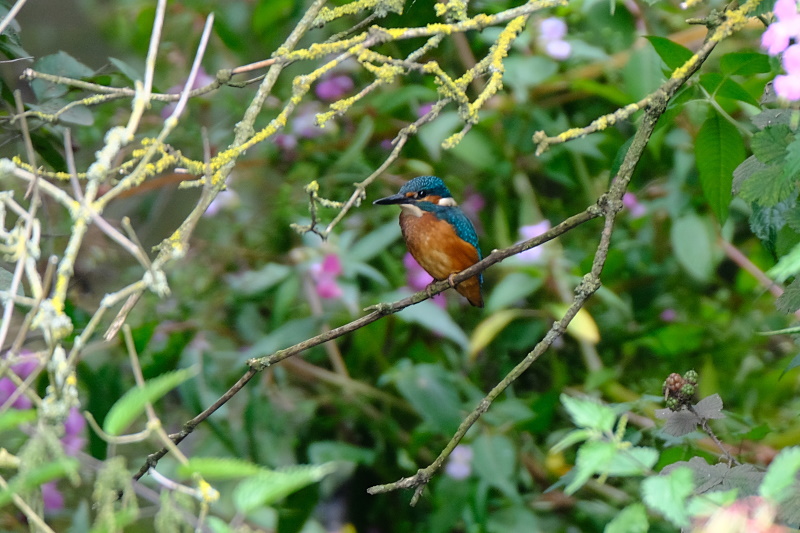
What to expect in August
Don't make the mistake of thinking that because it is the summer holidays that means August is a bit of a dead month when it comes to birding, because it's actually one of the best of the year. For starters waders will be pouring in with many adults still in summer plumage and with them will be, we hope, plenty of juveniles. There's something very satisfying looking at these young birds knowing that 'our' waders have had a good breeding season. You should look at them with some awe as most make it here having travelled across the Atlantic or all the way from Siberia completely independent of their parents. One species we hope to see in August are Curlew Sandpipers, we might get an adult or two at the beginning of the month but the juveniles could start to arrive in the last week of August with Hoylake Shore one of the best spots to see them.
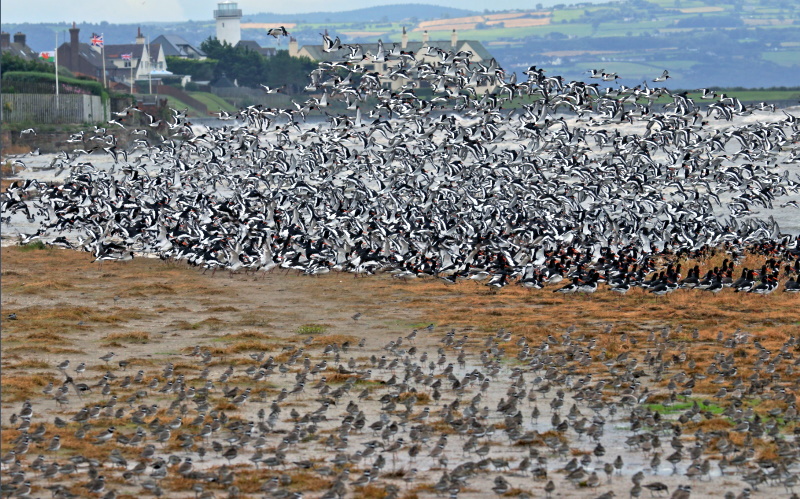
There are some good high tides peaking on the 21st and, given reasonable weather, this will give us a wader spectacle with the beaches covered in Dunlin, Oystercatchers, Ringed Plover and Sanderling - Hoylake, Point of Ayr and Gronant should be prime spots. Both the wader and gull flocks are certainly worth scanning for rarities, a Bonaparte Gull turned up a couple of years ago. Other waders will include several thousand Black-tailed Godwits at Caldy Wildfowl Collection, and at various sites around the estuary we could get Greenshank, Ruff, Common Sandpiper, Green Sandpiper and Wood Sandpiper. On the marshes look out for Spoonbills and Great Egrets.
Also on the beaches will be plenty of Sandwich and
Common Terns, and look out for the much scarcer Arctic and Black Terns.
Given strong westerlies we will get plenty of Skuas and towards the end
of the month, if we get a prolonged north-westerly wind, we could get
an early Leach's Petrel.
Forthcoming Events
August Highest Spring Tides (Liverpool)
Also see Tides page.
20th August, 12.52hrs (BST), 9.5m.
21st August, 13.35hrs (BST), 9.7m.
22nd August, 14.18hrs (BST), 9.6m.